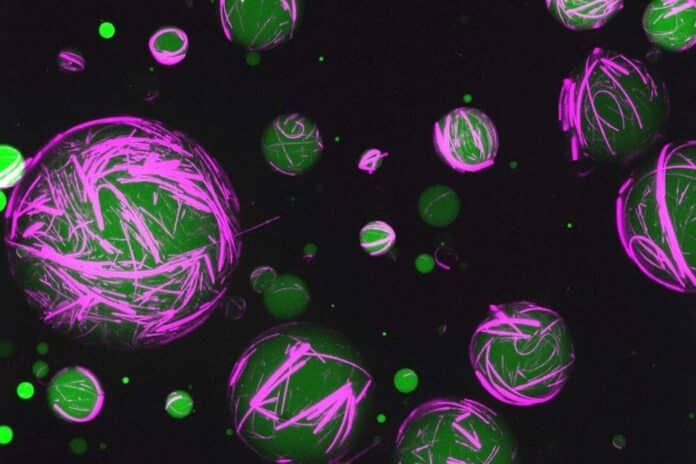By manipulating DNA and proteins, scientists from the University of North Carolina at Chapel Hill have created synthetic, self-assembling cells that replicate and acts like cells in the body.
Cells and tissues are made of proteins that simultaneously function and create structures. These proteins also form the framework of a cell called the cytoskeleton. Cells cannot function without the cytoskeleton, which allows cells to be flexible, both in shape and in response to their environment.
Scientists in this study didn’t use natural proteins. They created cells with functional cytoskeletons that are flexible and act according to their surroundings. They achieved this by employing a novel programmable peptide-DNA technology, which instructs peptides—the building blocks of proteins—and genetic material that has been reused to cooperate to form a cytoskeleton.
Carolina researcher Ronit Freeman said, “DNA does not usually appear in a cytoskeleton. We reprogrammed DNA sequences to act as an architectural material, binding the peptides together. The structures took shape once this programmed material was placed in a water droplet.”
“With this kind of DNA programming, scientists may design cells to fulfill particular roles and even fine-tune a reaction to outside stimuli. Living cells are more complicated than the artificial ones produced by the Freeman Lab. Still, they are also more erratic and vulnerable to harsh conditions, such as extremely high or low temperatures.”
Freeman says, “The synthetic cells were stable even at 122 degrees Fahrenheit, opening up the possibility of manufacturing cells with extraordinary capabilities in environments typically unsuitable to human life.”
According to Freeman, their materials are made to task, or to fulfill a given function before changing to meet a different one, as opposed to being made to last. Various peptide or DNA designs to program cells in materials such as textiles or tissues can be applied to order. These novel materials can change industries like biotechnology and medicine since they can be combined with other synthetic cell technologies.
“The research helps us understand what makes life,” Freeman says. “This synthetic cell technology will not just enable us to reproduce what nature does, but also make materials that surpass biology.”
Applications:
- Regenerative medicine
- Drug delivery systems
- Diagnostic tools
Journal Reference:
- Daly, M.L., Nishi, K., Klawa, S.J. et al. Designer peptide–DNA cytoskeletons regulate the function of synthetic cells. Nat. Chem. (2024). DOI: 10.1038/s41557-024-01509-w
